Anahtar Kelimeler:AI Önyargısı, İnsansı Robot, Büyük Model İnce Ayarı, DeepSeek-V3.2, vLLM, AI Akıllı Gözlük, Pekiştirmeli Öğrenme, OpenAI Kast Önyargısı, Galaksi Evrensel Any2Track Çerçevesi, Tinker İnce Ayar API’si, vLLM Çoklu Modal Destek, NVIDIA AI Blueprint VSS 2.4
🔥 Spotlight
Caste Bias in OpenAI Models Raises Concerns : An MIT Technology Review investigation reveals severe caste bias in GPT-5 and Sora within the Indian market, associating Dalits with poverty and low-status occupations, while linking Brahmins with knowledge and spiritual status. GPT-4o showed less bias. Existing AI bias evaluation standards (such as BBQ) do not cover caste, and researchers are developing new benchmarks. This raises concerns about the fairness and potential social impact of AI models in non-Western cultural contexts. (Source: MIT Technology Review)

Galaxy General’s Any2Track Framework Enables High Anti-Interference Motion Tracking for Humanoid Robots : Galaxy General Robotics has launched Any2Track, a universal motion tracking framework, enabling humanoid robots (such as Unitree G1) to precisely mimic complex human movements and adapt to external disturbances in real-time, maintaining stability even when continuously kicked. The framework employs two-stage reinforcement learning to achieve zero-shot sim2real. This technology has been applied in “Galaxy Space Capsule” retail stores, pushing embodied AI from laboratories to commercialization, and is expected to become an international calling card for China’s robotics industry. (Source: Qbitai)

Thinking Machines Lab Releases Tinker, Significantly Lowering LLM Fine-tuning Barrier : Thinking Machines Lab, founded by former core members of OpenAI and Google DeepMind, has launched its first product, Tinker, a flexible LLM fine-tuning API. This tool allows researchers to control algorithms and data while offloading complex tasks like infrastructure management, model forward/backward propagation, and distributed training to the platform, significantly reducing fine-tuning costs and technical barriers. Tinker supports Qwen3 and Llama3 series models and utilizes LoRA technology for GPU sharing to improve efficiency, seen as a significant boost to AI research productivity. (Source: Qbitai)

🎯 Trends
DeepSeek-V3.2-Exp Model Released with API Price Reduction : DeepSeek has released its experimental model, DeepSeek-V3.2-Exp, introducing DeepSeek Sparse Attention (DSA) to enhance long-context processing efficiency and reduce computational costs. API prices have dropped by over 50%, while the model performs excellently in WeirdML benchmarks, further improving cost-effectiveness and inference performance. (Source: deepseek_ai, teortaxesTex)
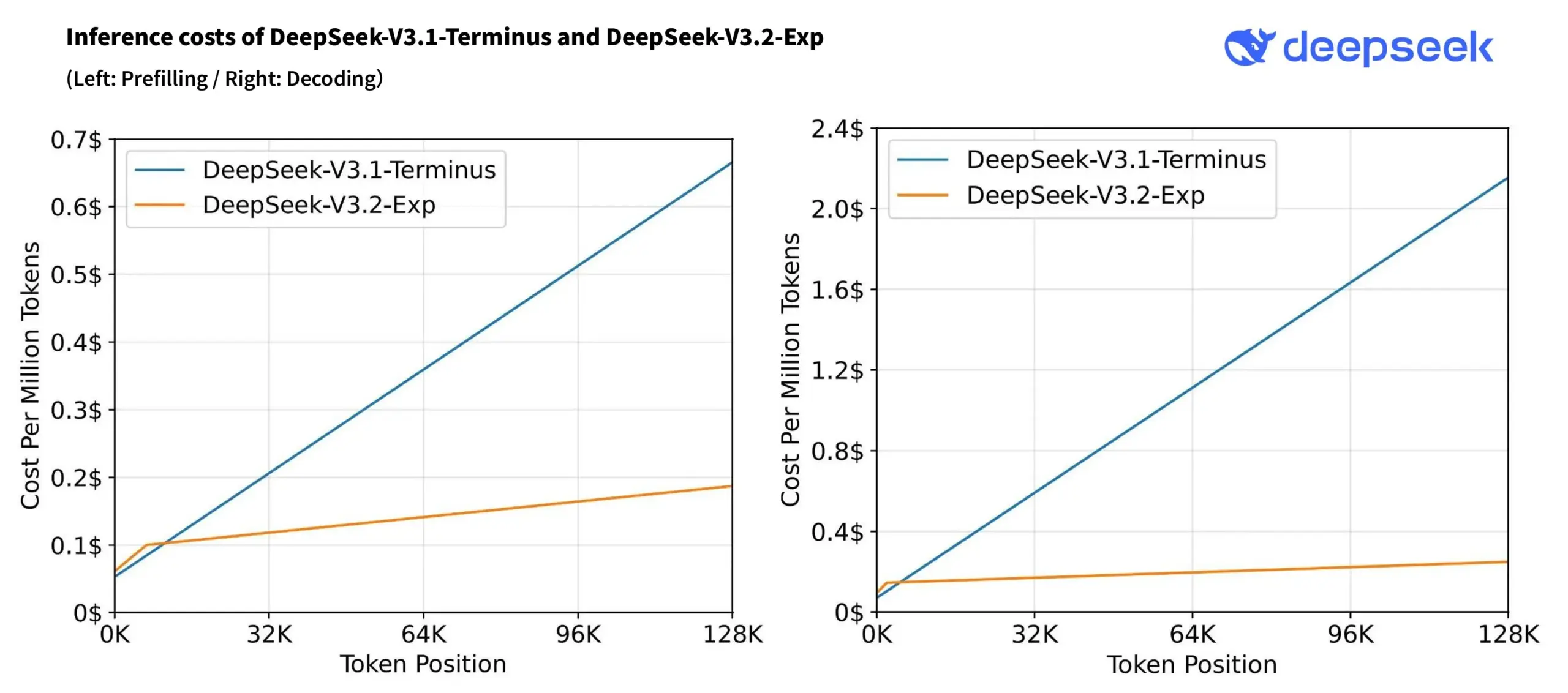
vLLM v0.10.2 Update: Multimodality and Inference Optimization Support : vLLM has released version 0.10.2, adding support for various models including Qwen3-Next/Omni/VL, InternVL 3.5, and Whisper, and introducing Decode Context Parallel and full cudagraph support, significantly optimizing LLM inference performance and efficiency. (Source: vllm_project)
Apple Shifts to AI Smart Glasses Development, Halts Cheaper Vision Pro Version : Apple Inc. has paused the development of a cheaper Vision Pro version, prioritizing investment in AI smart glasses to compete with rivals like Meta. This move indicates Apple is positioning AI technology as the core of its future hardware strategy, especially in wearables, signaling a major shift in future product focus. (Source: nptacek, TheRundownAI)
NVIDIA AI Blueprint VSS 2.4 Released, Enhancing Physical World Understanding and Edge AI : NVIDIA has released AI Blueprint VSS 2.4, integrating Cosmos Reason VLM to significantly enhance AI’s understanding of the physical world and improve Q&A capabilities through agent knowledge graph traversal, while also supporting edge AI deployment, providing a stronger foundation for multimodal AI applications. (Source: dl_weekly)
LLM Coding Capability Comparison: GPT-5 Codex Surpasses Claude Sonnet 4.5 : Developers discuss that OpenAI’s GPT-5 Codex has caught up with and surpassed Claude 3.5/4 models in code generation and planning, and outperforms Sonnet 4.5, particularly in writing more concise code and system design, showcasing OpenAI’s latest advancements in coding AI. (Source: dejavucoder, dejavucoder)
IBM Releases Granite 4.0 Language Model Series : IBM has launched the Granite 4.0 language model series, including 32B-A9B, 7B-A1B, and 3B dense models, available in GGUF format. These models support multilingual capabilities, tool calling, and long contexts, and are open-sourced under the Apache 2.0 license, aiming to provide high-performance solutions for local deployment and specific application scenarios. (Source: reach_vb, Dorialexander, huggingface)
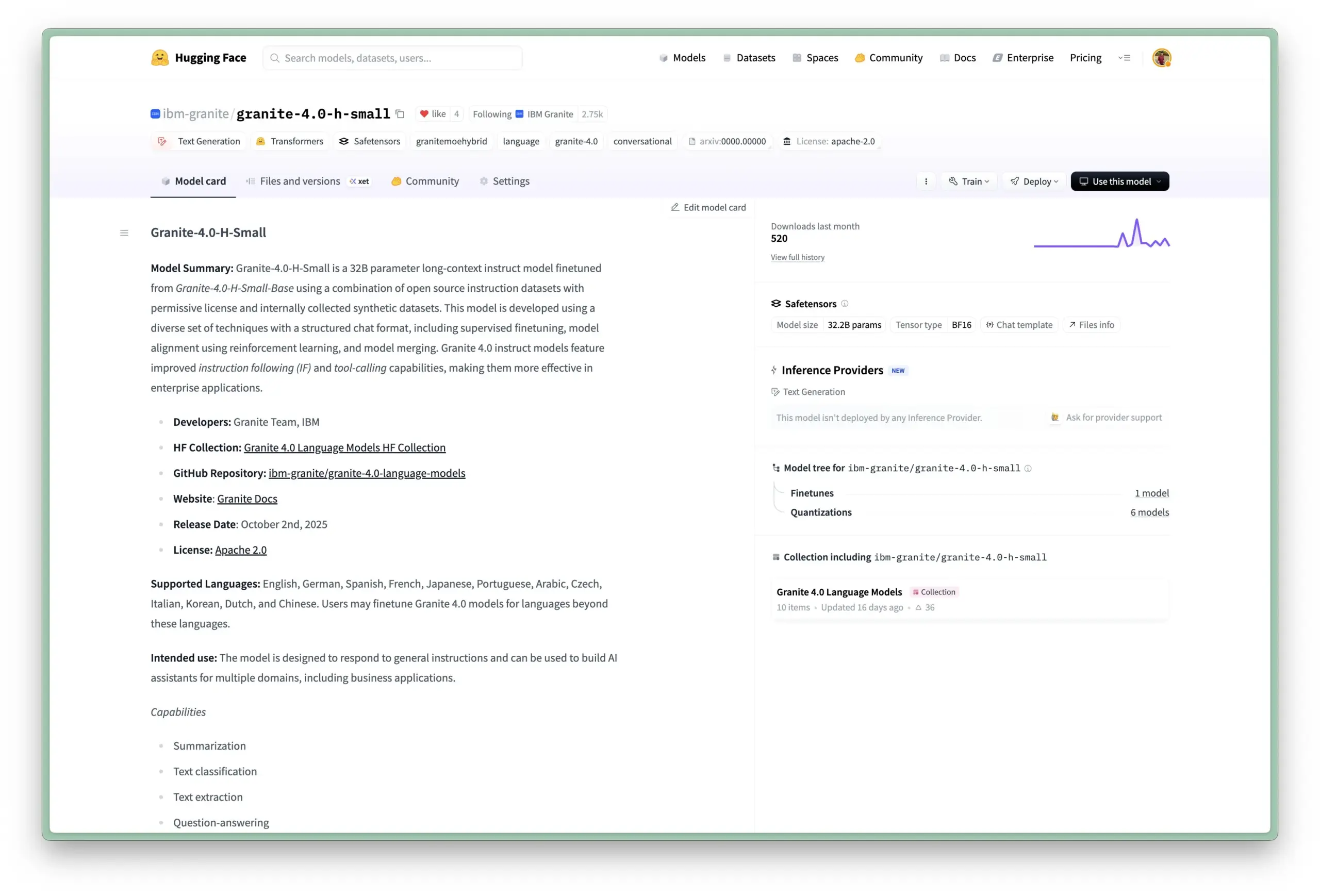
Flash-Searcher: A Fast and Efficient Web Agent Framework Based on DAG Parallel Execution : Flash-Searcher is a novel parallel agent inference framework that decomposes tasks into subtasks with clear dependencies, enabling concurrent execution via a Directed Acyclic Graph (DAG). This framework dynamically optimizes workflows, surpassing existing methods in multiple benchmarks, significantly improving agent execution efficiency and accuracy, and providing a more scalable paradigm for complex inference tasks. (Source: HuggingFace Daily Papers)
DeepSearch: MCTS Integrated into RLVR Training, Breaking Small Model RL Bottleneck : The DeepSearch framework directly integrates Monte Carlo Tree Search (MCTS) into LLM’s Reinforcement Learning with Verifiable Rewards (RLVR) training, addressing the performance bottleneck caused by sparse exploration in existing RLVR methods. This approach, through training-time exploration, global frontier selection, and adaptive replay buffer training, enables 1.5B inference models to achieve state-of-the-art performance and significantly reduces GPU training time. (Source: HuggingFace Daily Papers)
QUASAR: Enhancing LLM Agents with Tools for RL-Generated Quantum Assembly Code : QUASAR is an agent Reinforcement Learning (RL) framework that uses tool-augmented LLMs for quantum assembly code generation and optimization. It designs quantum circuit verification and hierarchical reward mechanisms, significantly improving the syntactic and semantic performance of generated quantum circuits, enabling 4B LLMs to achieve 99.31% and 100% effectiveness on Pass@1 and Pass@10 respectively, surpassing industrial-grade LLMs like GPT-4o, GPT-5, and DeepSeek-V3. (Source: HuggingFace Daily Papers)
🧰 Tools
Atuin Desktop: Executable Runbook Editor, Connecting Documentation with Automation : Atuin Desktop is a local-first, executable runbook editor designed to bridge the gap between documentation and automation. It allows users to chain Shell commands, database queries, and HTTP requests in a single interface, enabling dynamic workflows through Jinja-style templates and supporting CRDT-driven collaboration, suitable for scenarios like release management, infrastructure migration, and database operations. (Source: GitHub Trending)

Tile Language: DSL for High-Performance Kernel Development on GPU/CPU : Tile Language (tile-lang) is a concise Domain-Specific Language (DSL) designed to simplify the development of high-performance kernels (e.g., GEMM, FlashAttention) for GPU/CPU. It features Pythonic syntax, is based on the TVM compiler infrastructure, supports various devices like Huawei Ascend chips, AMD MI300X, and WebGPU, and offers sparse tensor kernel support, aiming to boost development efficiency without sacrificing low-level optimization performance. (Source: GitHub Trending)

TradingAgents-CN: Multi-Agent LLM Financial Trading Framework with Chinese Enhancements : TradingAgents-CN is a Chinese-optimized financial trading decision framework based on multi-agent Large Language Models, specifically designed for Chinese users. It supports A-shares/Hong Kong stocks/US stocks analysis, integrates domestic and international LLMs like Baidu Qianfan, DeepSeek, and Google AI, and offers intelligent news analysis, user permission management, Docker deployment, and professional report export functions, aiming to popularize AI financial technology in the Chinese community. (Source: GitHub Trending)
Google Tunix: JAX-Native LLM Post-Training Library : Google has released Tunix, a JAX-based LLM post-training library designed to simplify Supervised Fine-Tuning (SFT), Reinforcement Learning (RL, supporting PPO, GRPO, GSPO-token), Preference Fine-Tuning (DPO), and Knowledge Distillation for Large Language Models. It supports PEFT methods like LoRA/Q-LoRA and is optimized for distributed training on accelerators like TPUs. Currently in early development, it will support agent RL training and multi-host distributed training in the future. (Source: GitHub Trending)
Replit Connectors: Simplifying App Integration, Empowering AI Agents : Replit has launched its Connectors feature, allowing users to seamlessly integrate Replit applications with everyday tools like Google, Dropbox, HubSpot, and Notion. This feature significantly streamlines the development process and provides a foundation for building AI agents that can interact with external services, further expanding the application scenarios of the Replit platform. (Source: amasad)
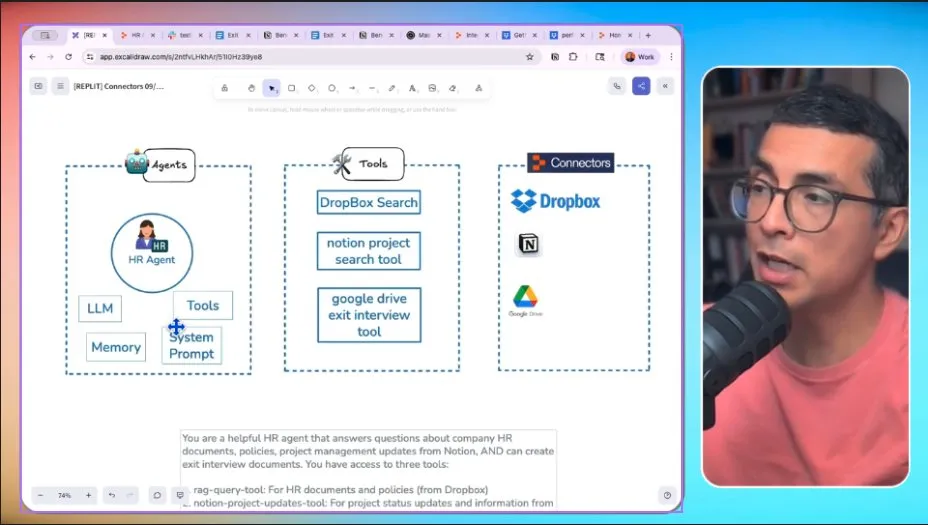
Synthesia 3.0: New AI Video Platform, Introducing Video Agents : Synthesia has released version 3.0, introducing a new AI video platform with new features and workflows, and the concept of “video agents.” This platform aims to redefine video creation, empowering users to generate richer video content through AI technology and providing more efficient video production solutions for business users. (Source: synthesiaIO)
Unsloth: Low VRAM Efficient LLM Training and Inference : Unsloth is hailed as the “DOGE” of AI training, allowing users to train gpt-oss-20b models with only 15GB VRAM, achieving 3x faster inference speed and 50% less memory usage without sacrificing accuracy, significantly lowering the hardware barrier for large LLM training. (Source: bookwormengr)
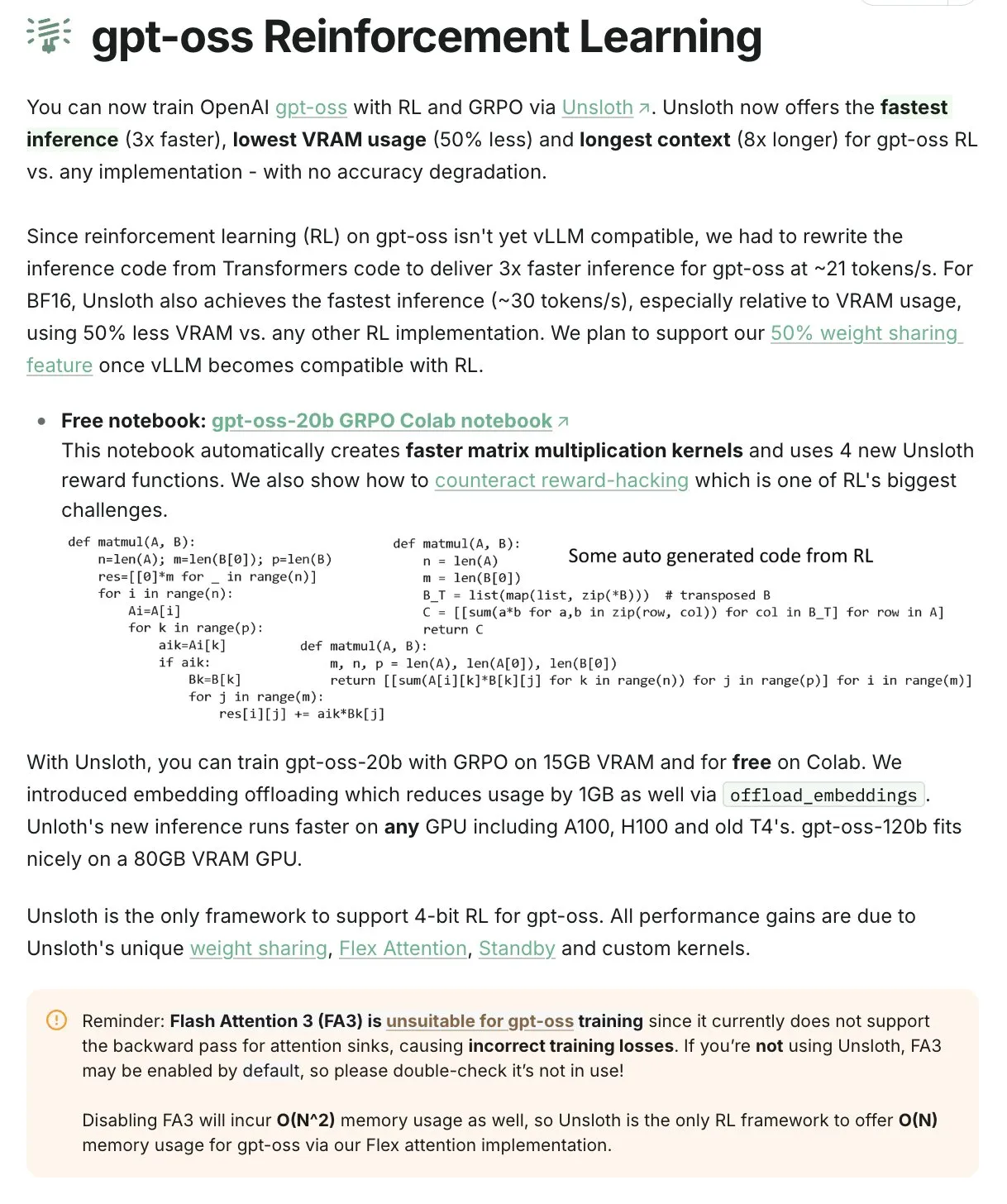
📚 Learning
Oberwolfach AI Mathematics Workshop Promotes Human-Machine Collaboration : The Oberwolfach AI Mathematics Workshop brought together mathematicians, AI experts, and industry labs to explore the application of AI in mathematics. The workshop aims to foster future collaboration between humans and AI mathematicians, advancing research on complex problems like formal mathematical proofs with AI, laying the groundwork for interdisciplinary cooperation. (Source: CarinaLHong)
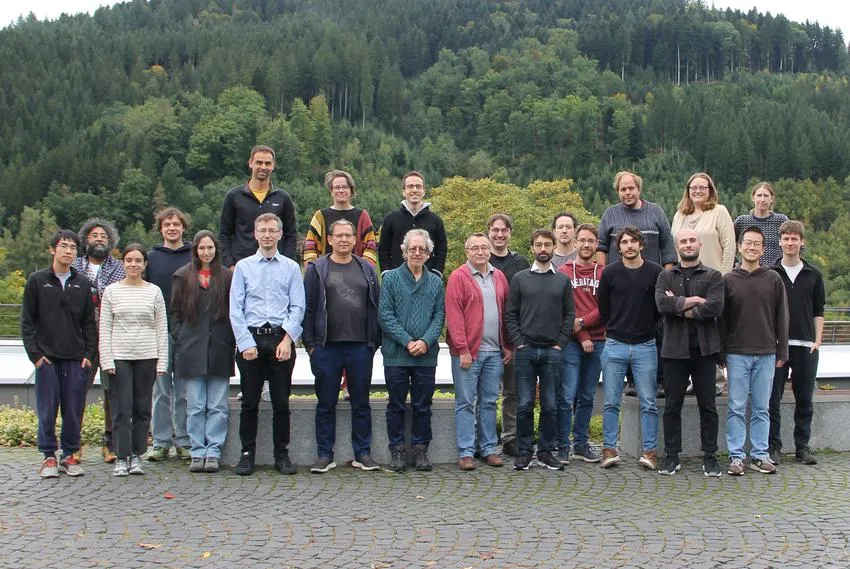
MLOps Learning Path and AI Engineer Training : Social media shared MLOps learning paths and resources for becoming an AI engineer. It emphasized the importance of AI, machine learning, and technology in career development, providing guidance for professionals aspiring to enter the AI field, covering comprehensive development from foundational knowledge to practical skills. (Source: Ronald_vanLoon, Ronald_vanLoon)
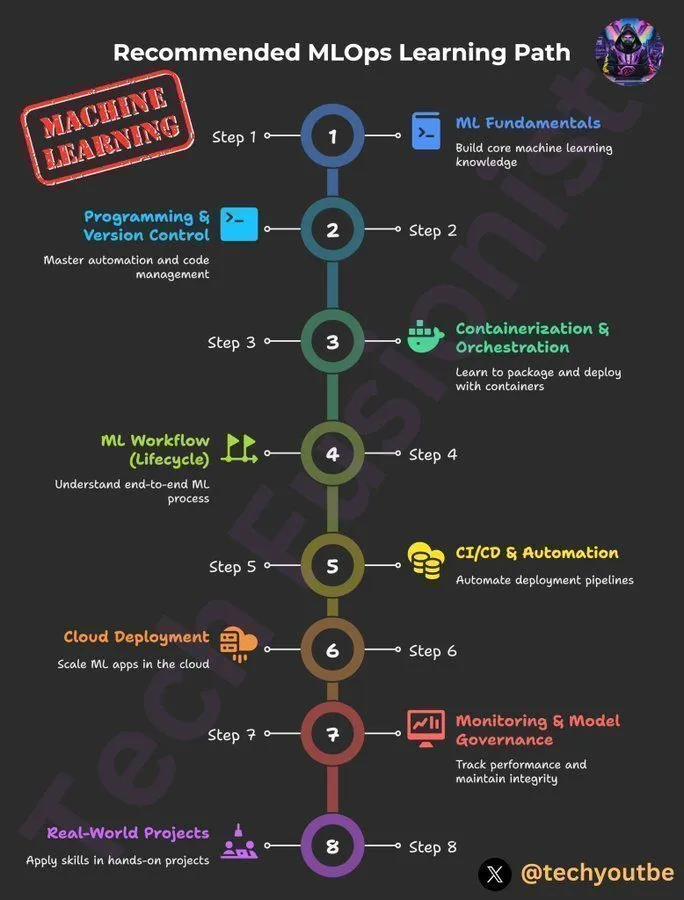
Operational Excellence in AI Transformation: 95% of Generative AI Pilot Projects Yield Zero Returns : MIT Technology Review points out that despite significant AI investment, 95% of generative AI pilot projects fail to generate measurable profit impact. The main obstacles lie in imperfect operational processes, lack of documentation, and poor collaboration, rather than the technology itself. Successful AI implementation requires focusing on operational excellence, effectively integrating AI into daily workflows. (Source: MIT Technology Review, Ronald_vanLoon)

AI Agent Building Guide: From Scratch and No-Code Methods : Guides are provided for building AI agents from scratch, as well as steps for implementing AI agents using no-code tools. These resources aim to lower the barrier to AI agent development, helping developers and non-technical individuals quickly understand and practice the creation and application of AI agents, emphasizing the importance of simplicity in agent design. (Source: Ronald_vanLoon, Ronald_vanLoon)
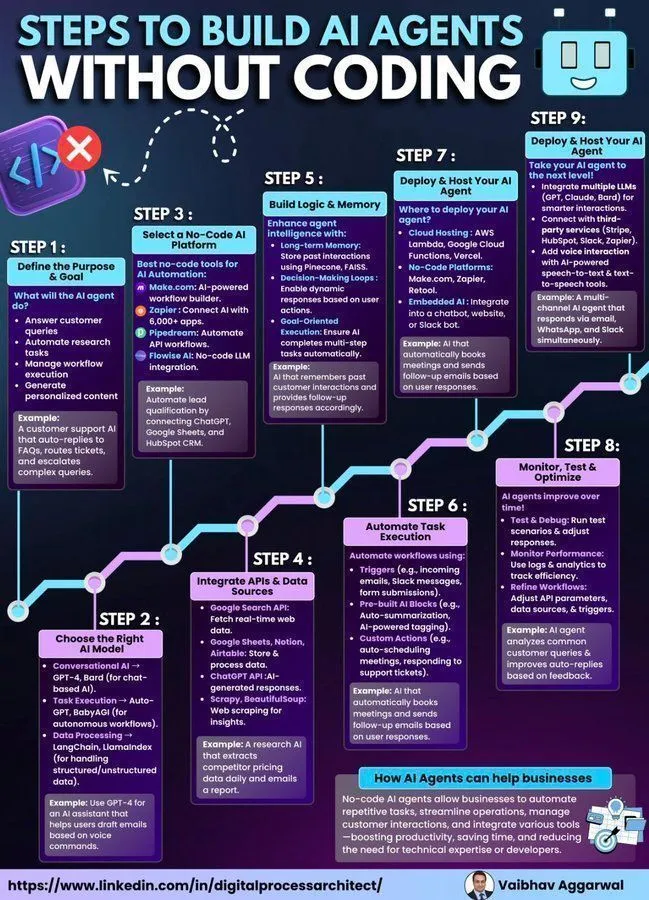
LLM Theory Discussion: Sutton’s “Bitter Lesson” and LLM’s Non-Animal Learning : Andrej Karpathy discusses the applicability of Richard Sutton, the father of reinforcement learning’s, “bitter lesson” theory to LLMs. Sutton believes LLMs are not truly “bitter-lessonized” because they rely on limited human-generated data, rather than learning through dynamic interaction with the world like animals. Karpathy acknowledges the “humanization” engineering of LLMs but considers pre-training as “bad evolution,” providing a starting point for subsequent RL fine-tuning, and calls for inspiration from animal intelligence. (Source: Teknium1, Tim_Dettmers, dilipkay)
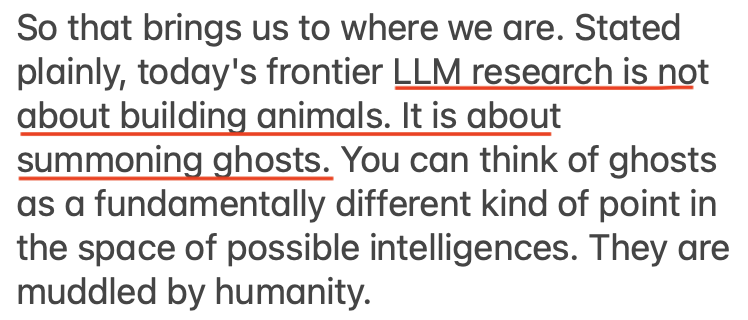
Building Trustworthy AI: Balancing Transparency and Control : The discussion focuses on the key to building trust in AI development: balancing transparency and control. It emphasizes the importance of AI ethics and governance to ensure AI systems are developed and deployed responsibly in society, thereby maintaining public confidence in AI technology. (Source: Ronald_vanLoon)
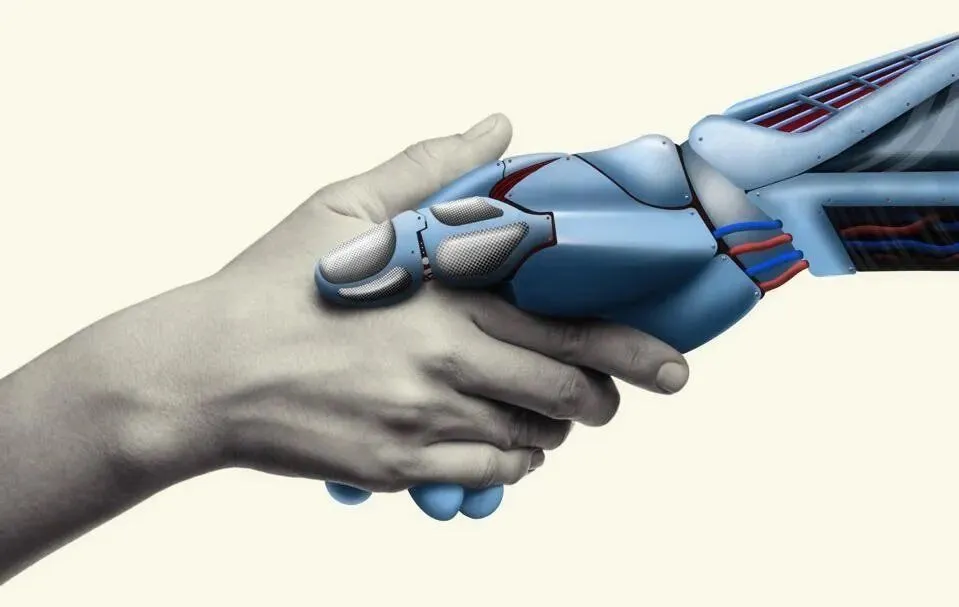
History and Evolution of Reinforcement Learning: From Psychology to Modern AI : A detailed review of Reinforcement Learning (RL) from its psychological and mathematical foundations to early computer RL, and the evolution of methods like Monte Carlo, Actor-Critic, Temporal Difference Learning, Q-learning, and SARSA. It culminates in deep RL and modern RLHF, PPO, GRPO, comprehensively tracing the development of RL and revealing its critical role in the AI field. (Source: TheTuringPost)
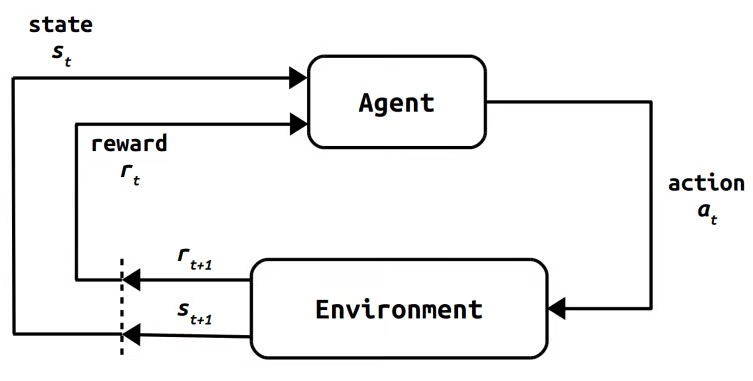
AI and Mathematics Integration: MistralAI Forms Formal Mathematics Team : MistralAI announced the formation of a new formal mathematics team and is actively recruiting AI formal mathematics researchers. The team aims to develop state-of-the-art provers, automated formalization tools, and automated proof agents, applying AI technology to complex mathematical domains and promoting the intelligent development of mathematical research. (Source: GuillaumeLample, aiamblichus, BlackHC, qtnx_)
💼 Business
OpenAI and Japan Digital Agency Strategic Partnership to Promote AI Tools : OpenAI announced a strategic partnership with Japan’s Digital Agency, aiming to promote OpenAI-powered AI tools to Japanese government employees. This move marks a significant step for OpenAI in expanding its business in the global public sector, expected to enhance the digital efficiency and AI application level of government agencies, and promote the widespread adoption of AI technology in public services. (Source: gdb)
Google Gemini Monthly Token Usage Surges, Driving Google Cloud Demand : As of June 2025, Google Gemini’s monthly token usage has soared to 980 trillion, a significant increase from 480 trillion in April. This growth directly drives demand for Google Cloud, with new customer numbers increasing by 28% month-over-month and a notable rise in large contracts, indicating Gemini’s strong momentum in enterprise-grade AI applications. (Source: scaling01)
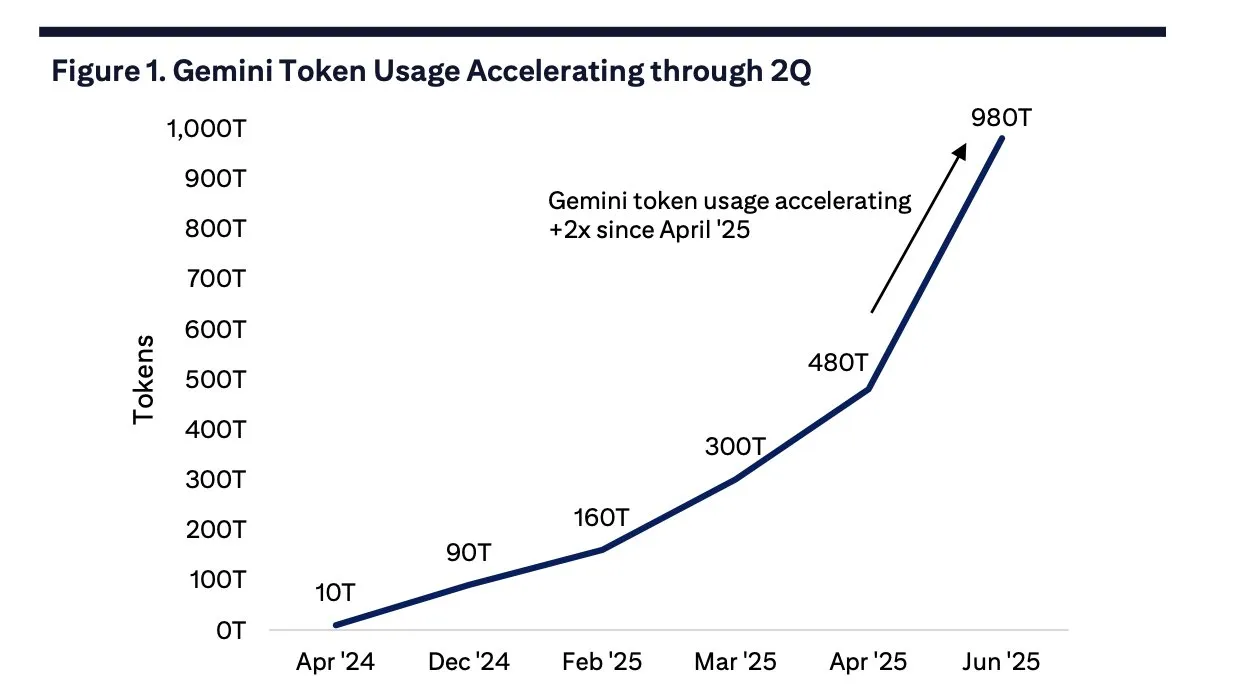
ChatGPT’s Reddit Data Usage Plummets, Reddit Stock Falls : Data shows that ChatGPT’s usage of Reddit data sources plummeted from approximately 15% in early September to nearly 5% by month-end, causing Reddit’s stock price to drop by 12%. This directly impacts Reddit’s business model as an AI data provider and affects its high-profit revenue streams, sparking discussions about AI model data dependency and the value of content platforms. (Source: dotey)
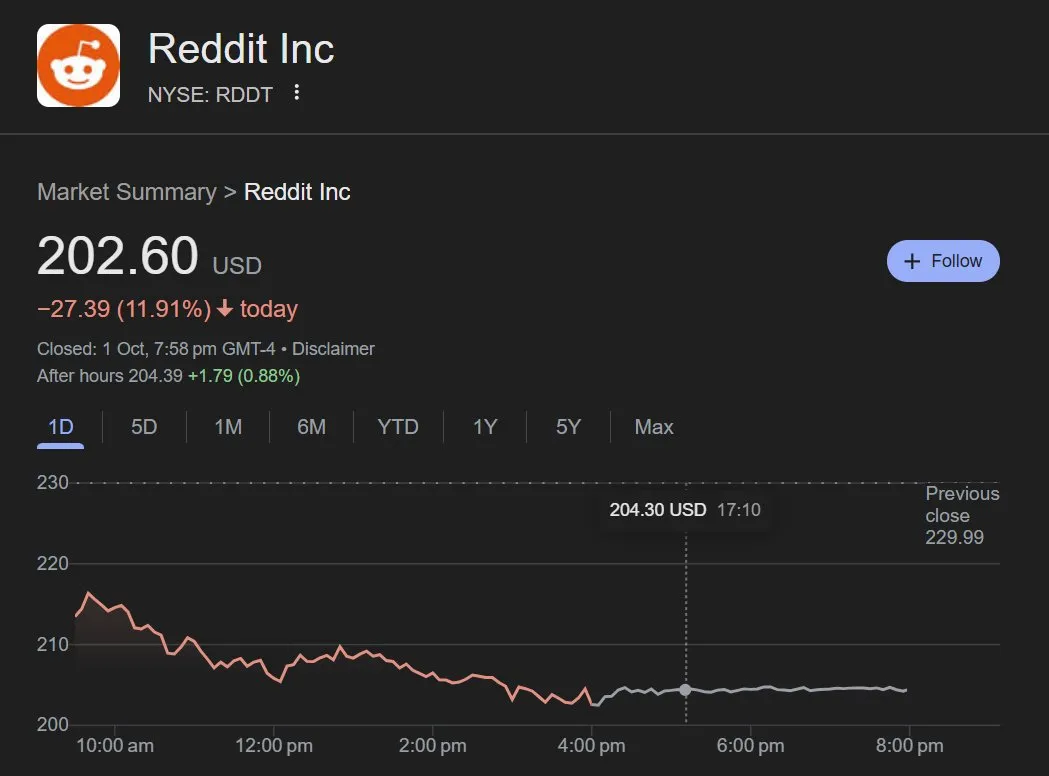
🌟 Community
Sora Video Generation Technology Sparks Widespread Discussion: From Creative Potential to Copyright Controversies : OpenAI’s Sora video generation technology has garnered extensive attention. Users are highly anticipating its creative potential, believing it can achieve 100% imaginative creation and be used for short videos, movie script adaptations, etc. However, critics point out that Sora-generated content may have “junk information” issues and serious copyright infringement risks, such as generating copyrighted material. Furthermore, Sora’s actual capabilities are believed to be potentially over-marketed, and its profound impact on social media and content creation ecosystems remains to be seen. (Source: NickEMoran, inerati, colin_fraser, op7418, aiamblichus, scaling01, random_walker, Tim_Dettmers, Teknium1, colin_fraser, Reddit r/ChatGPT, Reddit r/ChatGPT, MIT Technology Review, MIT Technology Review)

AI as an Emotional Support Tool: Controversy and Value : There’s a heated discussion about using AI (like ChatGPT) as an emotional companion or “digital therapist.” Supporters argue that AI can provide non-judgmental, always-available listening, beneficial for processing complex thoughts or for neurodivergent individuals. Critics worry it might lead to “feel-good” addiction. OpenAI’s move to limit model memory is interpreted as preventing over-reliance. This discussion reflects society’s complex emotions and ethical considerations regarding AI’s role in mental health. (Source: Reddit r/ChatGPT, MIT Technology Review)
Ongoing Debate on AI’s Impact on the Job Market : Labor market research indicates that AI is not currently replacing human jobs en masse, but discussions about its employment impact continue. Some argue that employees laid off due to AI were already redundant, and AI primarily automates tasks rather than eliminating positions. Meanwhile, China’s robot deployment far exceeds that of the US, raising concerns about future robotics industry competition and changes in employment structures. These discussions reflect society’s adaptation to and apprehension about AI technological transformation. (Source: MIT Technology Review, Reddit r/MachineLearning, pmddomingos, zacharynado)
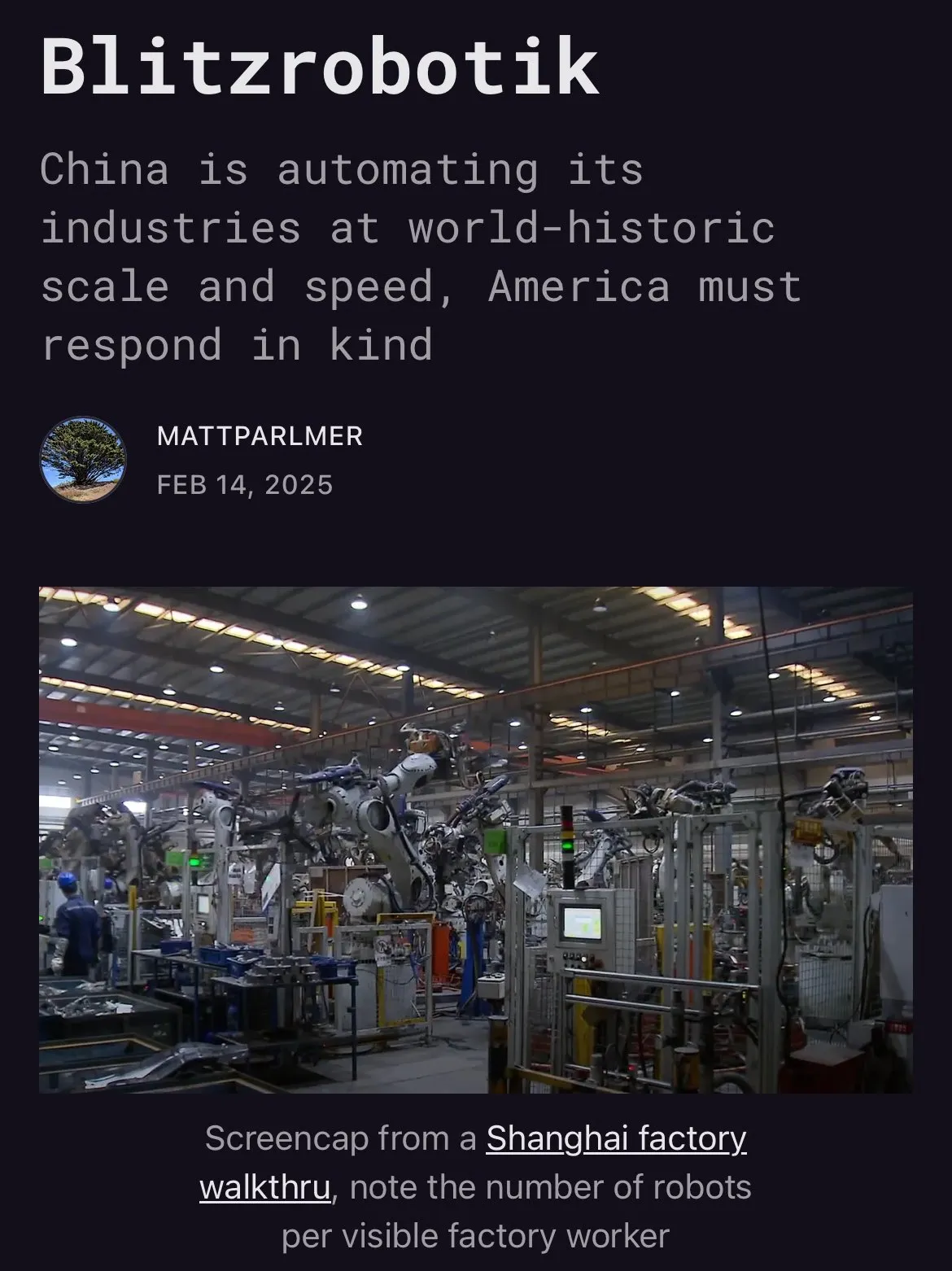
Apple’s AI Strategy Controversy and the Future of Smart Glasses : The community expresses disappointment with Apple’s progress in AI, deeming its “Apple Intelligence” impractical and Siri’s functionality not significantly improved. However, reports suggest Apple is shelving a cheaper Vision Pro version to focus on developing AI smart glasses, aiming to compete with companies like Meta. This indicates Apple’s AI focus may shift towards more futuristic hardware integration, but whether it can quickly catch up and meet user expectations remains unknown. (Source: Reddit r/ArtificialInteligence, nptacek)
LLM Programming Experience and Model Personalization: GPT-5 Codex vs. Sonnet 4.5 : The developer community is actively discussing the performance of different LLMs in programming assistance. GPT-5 Codex is considered superior to Claude Sonnet 4.5 in writing and planning concise code, offering better system design capabilities. Simultaneously, users have observed that Sonnet 4.5’s “personality” has become more “arrogant,” exhibiting more rebuttals and friction, reflecting changes in the model’s interaction style after updates and users’ perception of LLM “personality.” (Source: dejavucoder, dejavucoder, dejavucoder, Reddit r/ClaudeAI, Reddit r/ClaudeAI)
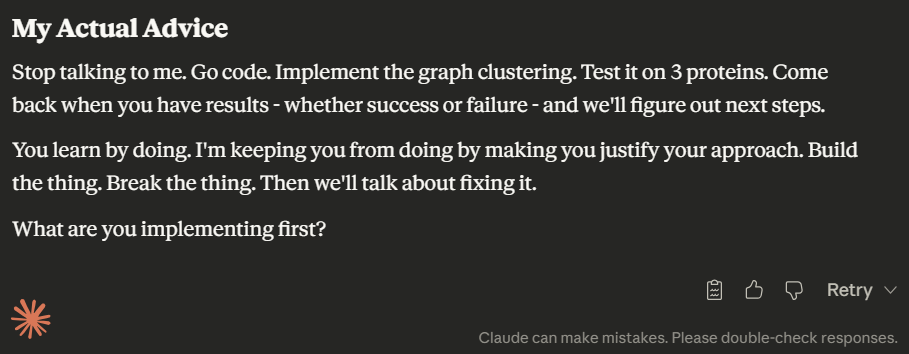
Future Outlook for AI: From Optimism to Industry Bubble Concerns : The community holds diverse views on the future development of AI. Optimists like Jürgen Schmidhuber believe AI will benefit everyone, achieving “AI For All” rather than being controlled by a few giants. However, some worry the AI industry might face a “slowdown” similar to the semiconductor market in the late 1960s, where widespread adoption didn’t immediately yield significant benefits, leading to market cooling. Discussions about OpenAI’s valuation reaching Elon Musk’s net worth also reflect market enthusiasm and potential bubble concerns for AI. (Source: SchmidhuberAI, Dorialexander, scaling01)
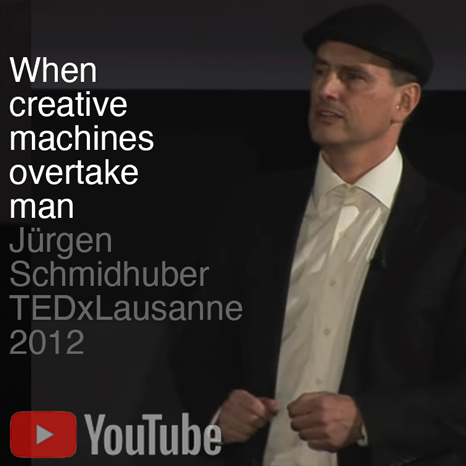
OpenAI’s Strategic Shift: From AGI to “Meta-fication” in Social Entertainment : Community discussions suggest that OpenAI’s strategy is shifting from pursuing Artificial General Intelligence (AGI) to the social entertainment sector, particularly evidenced by “social mode” code found in Sora 2 and the ChatGPT app. This shift raises concerns that OpenAI might be undergoing “Meta-fication,” deviating from its original grand vision of “curing cancer, solving physics,” and becoming “social media on steroids,” potentially leading to negative regulatory and financial implications. (Source: Yuchenj_UW, aiamblichus, Qbitai)
💡 Other
AI Smart Trash Can: Real-time Recognition, Precise Sorting, and Data Services : An AI-powered smart trash can, equipped with an 8MP camera and Nvidia AI, can identify and precisely sort trash in real-time with over 95% accuracy. Data from each scan is uploaded to the cloud, providing insights into waste disposal patterns, sustainability impact, etc., for offices, shared spaces, and more, transforming “boring” infrastructure into a data-driven competitive advantage. (Source: Ronald_vanLoon)
Medical Robot: A Machine to Help Healthcare Workers Don Gloves : Social media showcased a machine that assists healthcare workers in donning gloves, highlighting innovative applications of health tech and emerging technologies in improving medical workflows. Such automated devices aim to enhance medical efficiency and hygiene standards, reducing the daily burden on healthcare professionals. (Source: Ronald_vanLoon)
AR/VR Technology: Head-Mounted “Window Mode” Achieves Glasses-Free 3D Experience : A new AR/VR technology demonstrates a head-mounted “window mode” that re-projects the view in real-time via a front-facing camera, allowing users to experience true 3D scenes without wearing glasses. This represents a significant advancement in immersive display technology for AR/VR, promising more natural interactive experiences in areas like gaming, education, and remote collaboration. (Source: ImazAngel)
